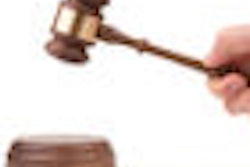
A team of German researchers has identified seven quantifiable parameters that can be used for the assessment of dentofacial aesthetics, according to a literature review that looked at how aesthetics can be evaluated in restorative dentistry (Journal of the American Dental Association [JADA], May 2012, Vol. 143:5, pp. 461-466).
Researchers from the Ruprecht Karls University School of Dental Medicine searched the Cochrane Library and Medline from January 1, 1975, to December 31, 2010, and selected 35 studies that focused on assessment strategies for dental professionals.
They were interested in doing this research because they were performing a number of aesthetic corrections on sound anterior teeth in the upper and lower jaw with direct resin composite buildups and wanted to measure the treatment outcome before and after the aesthetic correction, lead study author Cornelia Frese, DMD, told DrBicuspid.com.
"But we could not find a suitable tool for it," she said. "This is why I started to look over the literature, to find some quantifiable parameters."
A more systematic approach
The primary inclusion criteria for the studies in the review were intraoral and extraoral aesthetic assessment methods and indexes or rating scales evaluating aesthetics in restorative dentistry.
The researchers' goal was to classify the different methods and extract quantifiable clinical parameters that might help in developing an index to be used for diagnosis, treatment planning, and outcome assessment.
“It is no surprise that not all the studies are in agreement.”
— Ronald Goldstein, DDS
After reading the qualifying articles, the study authors sorted and grouped the studies into six categories according to their aesthetic assessment topic: golden proportion, soft-tissue measurement, smile and smile line assessment, orofacial indexes and scales, incisor proportion and angulation, and facial aesthetics. These categories included various aesthetic parameters.
Through their review, the authors identified seven parameters that are sufficiently and reasonably quantifiable: the smile line, lip line, incisal offset, location of dental and facial midline, incisor angulations and width-to-height ratios of the maxillary anterior teeth, gingival contour, and root coverage and papilla height.
"These parameters should be considered when providing dental treatment in the anterior area, as they allow for quantification and objective judgment," the study authors noted.
They hope that these findings might increase interest in a comprehensive dental aesthetic index.
"Although aesthetic feelings and sensations are influenced by sex, race, regionalism, and people's self-perceptions, the seven specified parameters we identified are accepted widely in the West," the authors noted. "If these guidelines are used in careful agreement with the patient's needs and expectations, both the dentist and the patient may achieve a satisfying aesthetical rehabilitation."
Computer-aided diagnostics
This is an important study because it attempts to summarize the 35 studies dealing with assessment of dentofacial aesthetics, according to Ronald Goldstein, DDS, one of the founders and past president of the American Academy of Esthetic Dentistry and author of Change Your Smile.
"It is no surprise that not all the studies are in agreement," he said. "Nor will they ever be."
However, studies like the ones described in the JADA article can be helpful, along with various tools and techniques employed by the dental profession, in working to achieve an aesthetic result pleasing to the patient, he added.
"One missing ingredient from the studies is the psychological interaction between dentist and patient, especially the demanding and picky patient and the patient who cannot even make a positive final decision about what he or she really wants," he said. "What I see in the future and one of the most certain predictions I make is that computer-aided diagnosis and treatment planning especially for aesthetics will be the norm within a decade."
At least one of the parameters identified by the JADA review has previously been recognized as a valid parameter for aesthetic evaluation.
A systematic literature review conducted by a German team reviewed the evidence on the validity and universal applicability of the smile line (European Journal of Esthetic Dentistry, Autumn 2011, No. 3, pp. 314-327).
"The smile line is a valid tool to assess the aesthetic appearance of a smile," concluded the authors of that study. "It can be applied universally as clinicians and laypersons perceive and judge it similarly."
Other studies also have identified aesthetic guidelines and standards that can be useful to clinicians during cosmetic restorative procedures (JADA, January 2001, Vol. 132:1, pp. 39-45). The authors of that study noted that the overall aesthetic impact of a smile can be divided into four specific areas: gingival aesthetics, facial aesthetics, microaesthetics, and macroaesthetics.
Further research is needed to establish and validate a common dental aesthetic index, according to the authors of this latest JADA review.
"At the moment, we are conducting a pilot study in our department to see if the identified parameters of this review are able to measure changes and differences in facial aesthetics, and if the measurements of aesthetics are objective, reproducible, and consistent," Dr. Frese said. "If we should succeed in our pilot study, these results might be beneficial for dentists in the future."



















